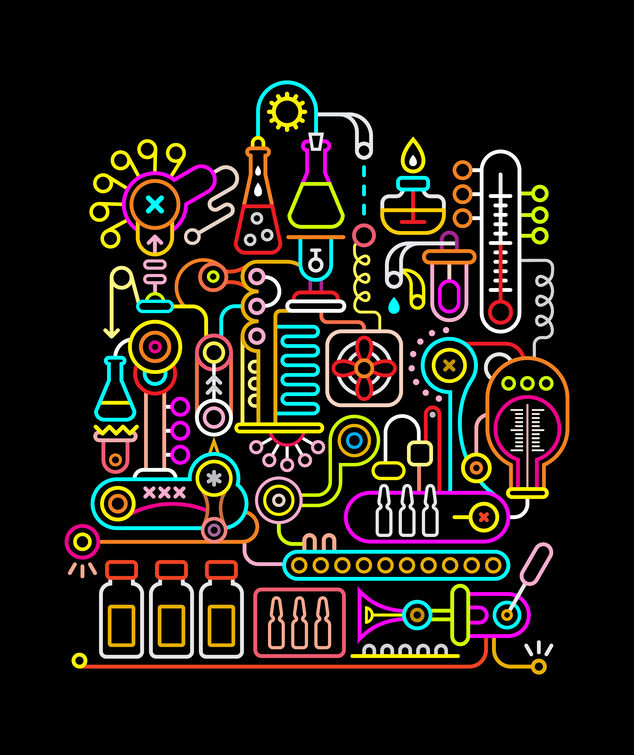3 Innovations chemical engineers are talking about
Chemical engineering has grown overtime as a field of innovation and science. Its applications in previous years were limited to only some core fields but now it is being applied even to our common life and the innovations are countless.
Chemical engineers create and use chemicals in so many new and innovative ways, making the world a cleaner, healthier, more vibrant place. So what are some of the most amazing discoveries of chemical engineering? Continue reading to find out about 3 innovations chemical engineers are talking about.
-
Steam-Methane Reformation
About 95% of today’s hydrogen is produced in a process known as steam-methane reformation (U.S. Department of Energy, 2012). This is a process that utilizes high-temperature steam around 700 degrees Celsius to 1000 degrees Celsius. The overall mechanism of natural gas reformation undergoes three steps: the steam-methane reformation (or other natural gas reformations), water-gas shift reactions, and pressure-swing absorption.
Hydrogen can be produced from natural gas, such as methane, in the steam-methane reformation process. This process employs a catalyst that allows methane and other natural gases to react with steam in order to produce hydrogen, carbon monoxide, and a small byproduct of carbon dioxide. Comparatively, a small byproduct means that the substance makes a minor contribution to the total amount of product formed. As a result of forming vast amounts of hydrogen in stream-methane reforming, the stream of carbon dioxide produced is very significant!
Overall, the steam-reforming process is endothermic. An endothermic process is a particular reaction or mechanism that requires heat to be supplied in order for the reaction to move forward, that is, from reactants to products.
-
Penicillin
There’s a good chance that penicillin has saved your life. Without it, a prick from a thorn or sore throat can easily turn fatal. Alexander Fleming generally gets the credit for penicillin when, in 1928, he famously observed how a mould growing on his petri dishes suppressed the growth of nearby bacteria. But, despite his best efforts, he failed to extract any usable penicillin. Fleming gave up and the story of penicillin took a 10-year gap. It took up till 1939 for Australian pharmacologist Howard Florey and his team of chemists to figure out a way of purifying penicillin in useable quantities.
However, as World War II was raging at the time, scientific equipment was in short supply. The team therefore cobbled together a totally functional penicillin production plant from bath tubs, milk churns and book shelves. Not surprisingly the media were extremely excited about this new wonder drug, but Florey and his colleagues were rather shy of publicity. Instead Fleming took the limelight.
Full-scale production of penicillin took off in 1944 when the chemical engineer Margaret Hutchinson Rousseau took Florey’s Heath Robinson-esque design and converted it into a full-scale production plant.
-
Polythene – the accidental invention
Most common plastic objects, from water pipes to food packaging and hardhats, are forms of polythene. The 80m tons of the stuff that is made each year is the result of two accidental discoveries.
The first occurred in 1898 when German chemist Hans Von Pechmann, while investigating something quite different, noticed a waxy substance at the bottom of his tubes. Along with his colleagues he investigated and discovered that it was made up of very long molecular chains which they termed polymethylene. The method they used to make their plastic wasn’t particularly practical, so much like the penicillin story, no progress was made for some considerable time.
Then in 1933 an entirely different method for making the plastic was discovered by chemists at, the now defunct chemical company, ICI. They were working on high-pressure reactions and noticed the same waxy substance as von Pechmann. At first they failed to reproduce the effect until they noticed that in the original reaction oxygen had leaked into the system. Two years later ICI had turned this serendipitous discovery into a practical method for producing the common plastic that’s almost certainly within easy reach of you now.
Looking for engineering courses? Don’t have the skills or knowledge? Find out more about the chemical engineering course on offer at London TFE and book on to one of our chemical courses.
 All Courses
All Courses
 Accounting and Finance
Accounting and Finance Administration and Office Management
Administration and Office Management Business Administration
Business Administration Chemical Engineering
Chemical Engineering Communications and Public Relations (PR)
Communications and Public Relations (PR) Compliance and Legal
Compliance and Legal Construction Management
Construction Management Contract and Project Management
Contract and Project Management Customer Experience and Relationship Management
Customer Experience and Relationship Management Data Management and Business Intelligent
Data Management and Business Intelligent Digital Transformation
Digital Transformation Energy and Sustainability
Energy and Sustainability Health, Safety and Environment
Health, Safety and Environment Healthcare Management
Healthcare Management Hospitality & Tourism
Hospitality & Tourism Human Resources and Talent Development
Human Resources and Talent Development Industrial Manufacturing and Production
Industrial Manufacturing and Production Innovation and Artificial Intelligence (AI)
Innovation and Artificial Intelligence (AI) Leadership and Management
Leadership and Management Oil and Gas
Oil and Gas Procurement & Supply Chain Management
Procurement & Supply Chain Management Public Sector
Public Sector Quality and Productivity
Quality and Productivity Retail and E- Commerce
Retail and E- Commerce Sales and Marketing
Sales and Marketing Sports Event Management and Operations
Sports Event Management and Operations Strategy and Business Planning
Strategy and Business Planning Sustainability and CSR
Sustainability and CSR Learning Solutions
Learning Solutions
 About Us
About Us
 iLearn Blog
iLearn Blog
 Directory Calendar
Directory Calendar
 Contact Us
Contact Us
 All Courses
All Courses
 Accounting and Finance
Accounting and Finance Administration and Office Management
Administration and Office Management Business Administration
Business Administration Chemical Engineering
Chemical Engineering Communications and Public Relations (PR)
Communications and Public Relations (PR) Compliance and Legal
Compliance and Legal Construction Management
Construction Management Contract and Project Management
Contract and Project Management Customer Experience and Relationship Management
Customer Experience and Relationship Management Data Management and Business Intelligent
Data Management and Business Intelligent Digital Transformation
Digital Transformation Energy and Sustainability
Energy and Sustainability Health, Safety and Environment
Health, Safety and Environment Healthcare Management
Healthcare Management Hospitality & Tourism
Hospitality & Tourism Human Resources and Talent Development
Human Resources and Talent Development Industrial Manufacturing and Production
Industrial Manufacturing and Production Innovation and Artificial Intelligence (AI)
Innovation and Artificial Intelligence (AI) Leadership and Management
Leadership and Management Oil and Gas
Oil and Gas Procurement & Supply Chain Management
Procurement & Supply Chain Management Public Sector
Public Sector Quality and Productivity
Quality and Productivity Retail and E- Commerce
Retail and E- Commerce Sales and Marketing
Sales and Marketing Sports Event Management and Operations
Sports Event Management and Operations Strategy and Business Planning
Strategy and Business Planning Sustainability and CSR
Sustainability and CSR Learning Solutions
Learning Solutions
 About Us
About Us
 iLearn Blog
iLearn Blog Directory Calendar
Directory Calendar
 Contact Us
Contact Us















































 Course category
Course category Course Venue
Course Venue
